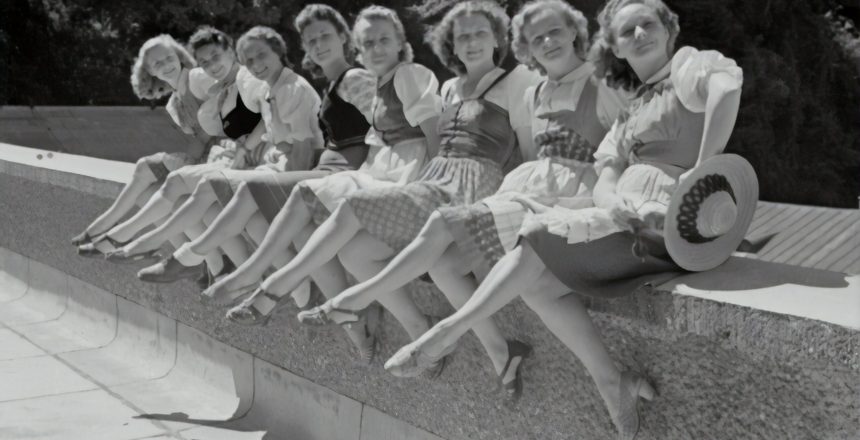Every man and woman living today has many more female than male predecessors. Throughout human history each woman had on average about one surviving child, but only 50% of men had the opportunity to reproduce at all. We know from DNA analysis that around the time humans invented agriculture, for every 17 women only one man reproduced. These facts explain two things, both of which still determine our behaviour today.
First, it was women who greatly shaped humankind’s evolution through a process called sexual selection (trait selection based on female preferences). In contemporary terms this means that because women prefer men who display status and resources[1] such as cars, houses, gifts and expensive dinners, men have developed the corresponding psychological traits for acquiring these resources to gain access to the women. Evidently this process is still in place today and influences both male and female behaviour.
Second, women always were the bottleneck of the reproductive success of men, which in part explains behaviours such as male jealousy and the fact that men pursue women and women play coy.
But what women really want has puzzled men for millennia, and for good reason, as female preferences change based on various biological aspects and the situations they may find themselves in. A good example is the decision of whether to pursue a long-term or short-term mating strategy.
Evolution has always favoured women who were highly selective in their mate choice. Those who have only a few shots at reproductive success have to aim with great care, which is why women do not choose mates randomly. Over eons, women have developed a preference for healthy men who were able to provide food, shelter, security and good genes, for men who remained committed long enough to ensure the survival of their offspring.
Nevertheless, both men and women sometimes pursue a short-term mating strategy, but they differ in their motivation for doing so. From an evolutionary perspective a weekend affair, a brief fling or a one-night stand can secure women additional resources or choice, should the primary partner default intentionally or unintentionally on his obligations. Research has shown that women whose primary partner lacks specific indicators of genetic fitness, such as masculine facial features or overall sexual attractiveness, are, under circumstances described below, more prone to direct their desire elsewhere.
While women looking for a long-term mate prefer character traits that indicate stability, kindness, intelligence, prospective resource potential and status, for casual romantic partners these qualities become markedly less important. Here women look for physical attractiveness, masculinity and dominance, all of which indicate good genes. Of particular interest are men surrounded by other women, especially if those women are physically attractive themselves.
Biology offers an explanation for this seemingly impulsive behaviour. Scientists have long believed that female ovulation is entirely concealed, perhaps even from the women themselves. But recent research suggests that women’s psychology is sensitive to their menstrual cycle and that the approach of ovulation changes women’s motives, preferences and social behaviours. From an evolutionary point of view this makes sense, as the pressure to secure the perfect genes intensifies when the possibility of a pregnancy is highest.
This is why at or near peak fertility women experience an increase in self-perceived sexiness and greater sexual desire, they are more receptive to sexual advances and respond more to sexual stimuli. Near ovulation, women dress to impress, show more skin and display a deeper décolleté; they modify their physical appearance (make-up) to mimic features of youth, attractiveness and femininity; they are more inclined to attend social gatherings (going out) and become more intra-sexually (female–female) competitive. Women change their purchasing patterns during this period too and spend more money on beautification products such as cosmetics, push-up bras, high heels, haircuts, manicures and clothing and fitness products.
Fully in line with gender-specific preferences, 90% of plastic surgeries are done by women, and 99% of Ferraris are owned by men, even though many women could afford such luxury cars today. This demonstrates that economic success in our modern times does not change women’s primal inclinations; if anything it amplifies them. Successful women tend to seek out men who earn even more than they do, men who have professional degrees equivalent to or higher than their own combined with personality traits of independence and self-confidence. Birth control technology has altered the cost–benefit equation for women, but human psychology has evolved over tens of thousands of generations, which is why even financially independent women today are still susceptible to preferences that have their origin in ancient times.
So it seems that what women really want is likely to remain a mystery for generations of men yet to come because the intricate interaction among biological, psychological and external forces that influence their behaviours and desires makes accurate predictions challenging to accomplish. However, there are established behaviour patterns that, if placed in the right context, can help both genders to anticipate and manage their own and the other’s reactions and emotions in critical or sensitive situations. All it takes is knowledge and a certain level of self-control.
[1] There is extensive scientific evidence confirming women’s proclivity for men with status and resources.







